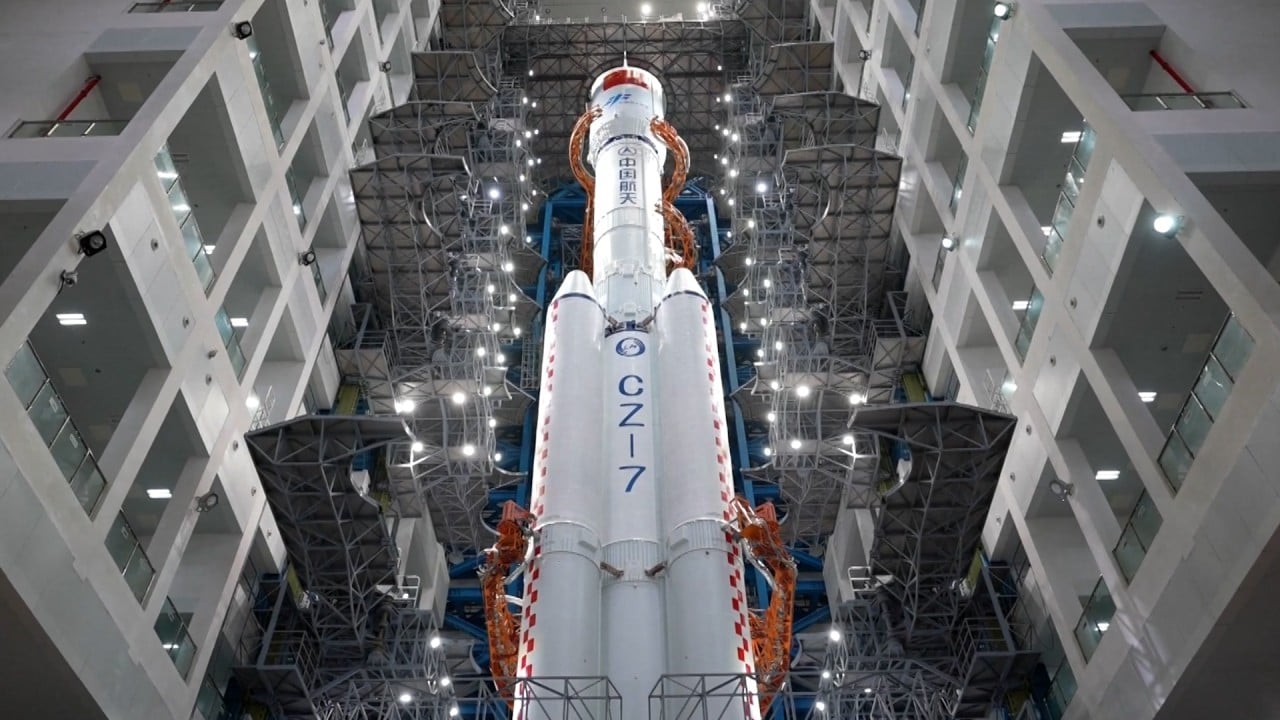Advertisement
China’s most powerful space engine configuration is ‘ready for flight’
- Four YF-100K engines pass ignition test to ‘fully verify’ their compatibility and individual reliability, chief designer says
- Combined powerhouse delivers more than 500 tonnes of thrust and could be used to propel Long March-12 rocket’s maiden flight
Reading Time:2 minutes
Why you can trust SCMP
5

Ling Xinin Ohio
China has completed ignition testing for the most powerful and complex engine configuration in its Long March rocket programme, with the array ready for flight tests, according to the aerospace authority.
The China Aerospace Science and Technology Corporation (CASC) said the four parallel liquid oxygen kerosene (kerolox) engines generated a total thrust of more than 500 tonnes in a test on Sunday at the Tongchuan Test Centre in the northwestern province of Shaanxi.
Chief designer Li Bin, from the CASC-affiliated Academy of Aerospace Propulsion Technology in Xian, said Sunday’s test “fully verified” the engines’ compatibility as well as their individual reliability.
“The new engine is now ready to move to the flight test phase,” he told state broadcaster CCTV on Monday.
The YF-100K engines, which each produced 130 tonnes of thrust, were designed with pump back swing technology, which effectively reduces the size and weight of the engine structure compared to the traditional front pump swing design.
“Engines built with the pump back swing technology are typically more compact. For instance, we can fit four of them into a 3.8m-wide first-stage rocket, and seven into a 5m-wide first-stage,” Li said.
Advertisement
